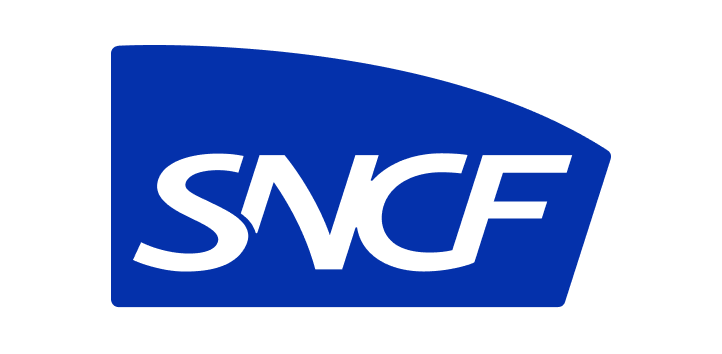Using NFTs as a tracking tool is an idea that came directly from our experience with “blockchain technology”: it is not a database, it is a way to empower people.
I - ‘Blockchain’ as a database isn’t a solution for tracking
To understand why we apply NFTs to supply chain tracking, you need first to understand why we haven't applied “blockchain timestamping” to supply chain tracking.
Proof of Existence
In 2016, the world discovered the “blockchain”, an “immutable database” where any event could be written forever, something that was sold as "so much more than just Bitcoin”.
A database that can’t be overwritten was something new, and offered new possibilities, especially one: “Proof of Existence”.
The very idea behind this is that you can take any kind of data and create a unique signature of it (a hash or ‘digest’), and put that unique signature into the blockchain. To include that information, you add it to a transaction that will be included in a certain block.
nb: hashing is interesting because the function will always give the output of numbers and letters with the same data in input, but any change in the input data will change the output completely. This means that if you take a dataset, make a hash of it and compare the hash to an other you will have a certified truth: if it match, it is the same dataset, if it doesn’t match, it is not the same dataset.
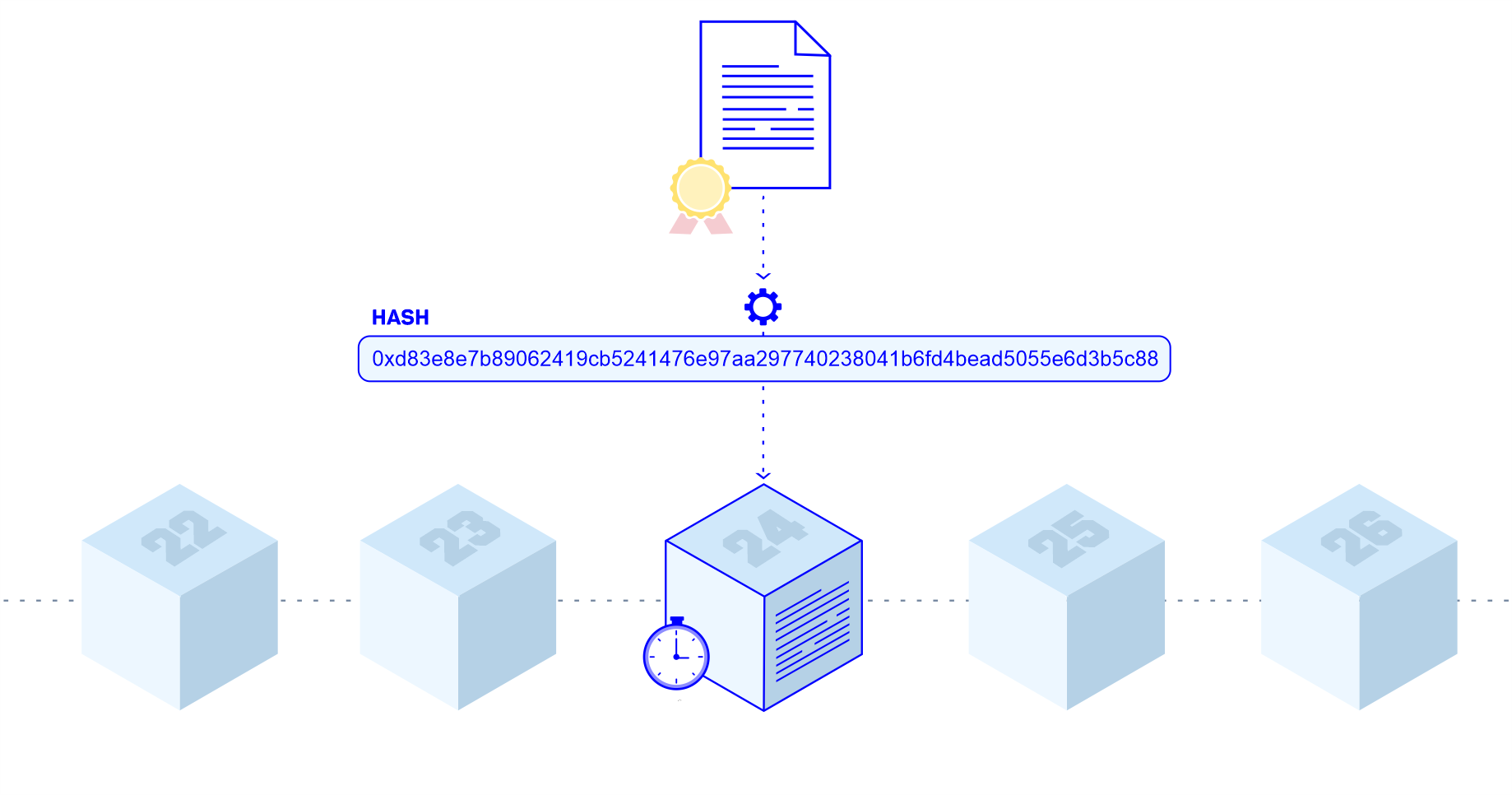
By including that dataset into a block it will inherit one important characteristic: the timestamp of the block.
It means that we are now able to prove with certainty that the dataset we made a signature of existed at the time it was put in the blockchain and was never modified. So we now have a Proof of Existence (PoE) of that dataset at a certain point in time.
Being able to certify a data with the blockchain has been seen as a game changer in traceability.
The “immutable database” fallacy
Why? Because you are now able to trace events with certainty: if you include each events happening in the supply chain in the blockchain, then you will be able to retrace with certainty that these events existed at a point in time, when they were included in the blockchain.

But there is a fallacy here, PoE is just what it is, nothing more: a proof that a data existed at a point in time, it is not a proof that the data was true.
It means that you can’t trust a series of events put in the blockchain just because it is in the blockchain. If the operators declared false data, then false data is in the blockchain. You can’t conclude on an ‘healthy supplychain’ with just that.
In fact that idea doesn’t really bring more trust to supply chain tracking. It’s just providing a certified timestamp to a set of data.
Certifying the exchange
What we realized is that the part that really matters is the exchange between the operators in the supplychain, like what CMR is doing on paper for any trades. If we have an agreement on the content of an exchange and put that agreement on the blockchain, then we have a certified event that becomes interesting.
Let’s take an example of an exchange of pallets:
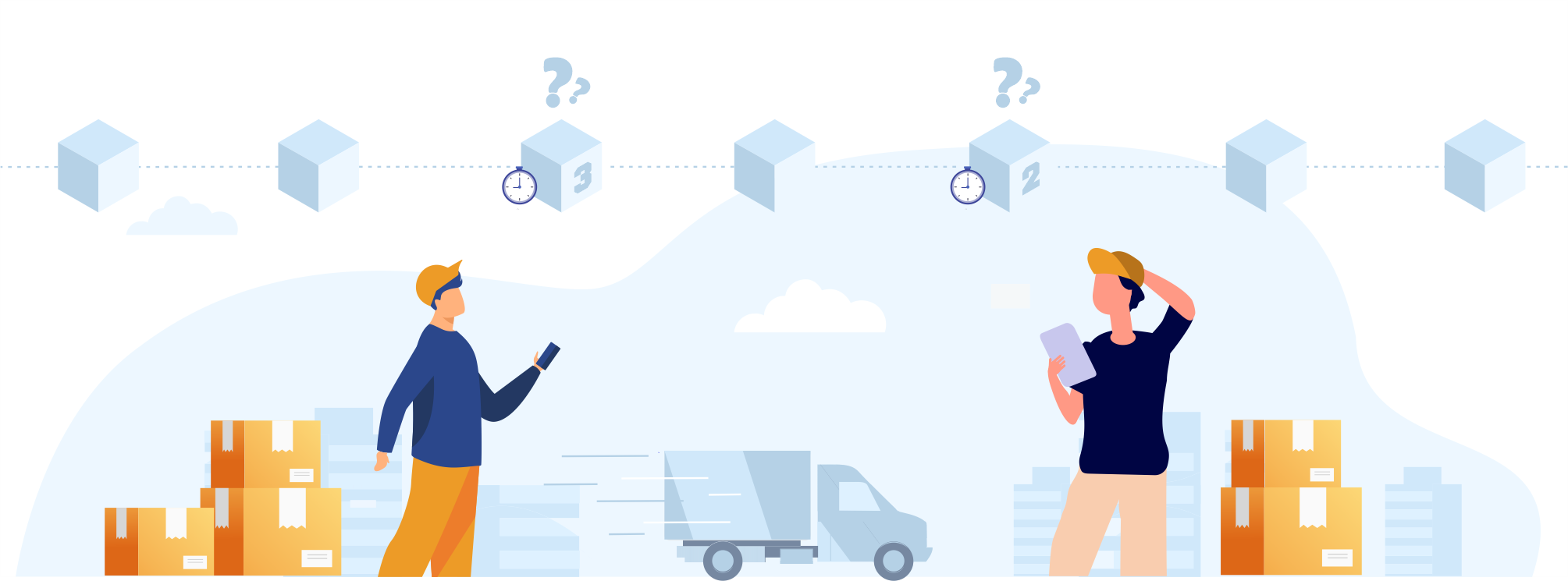
- With a simple PoE, on one side A register the event “I gave 3 pallets”, and on the other side the receiver B register “I received 2 pallets”. This gives you two contradictory, but certified, events on the blockchain, with no clue of who’s telling the truth.
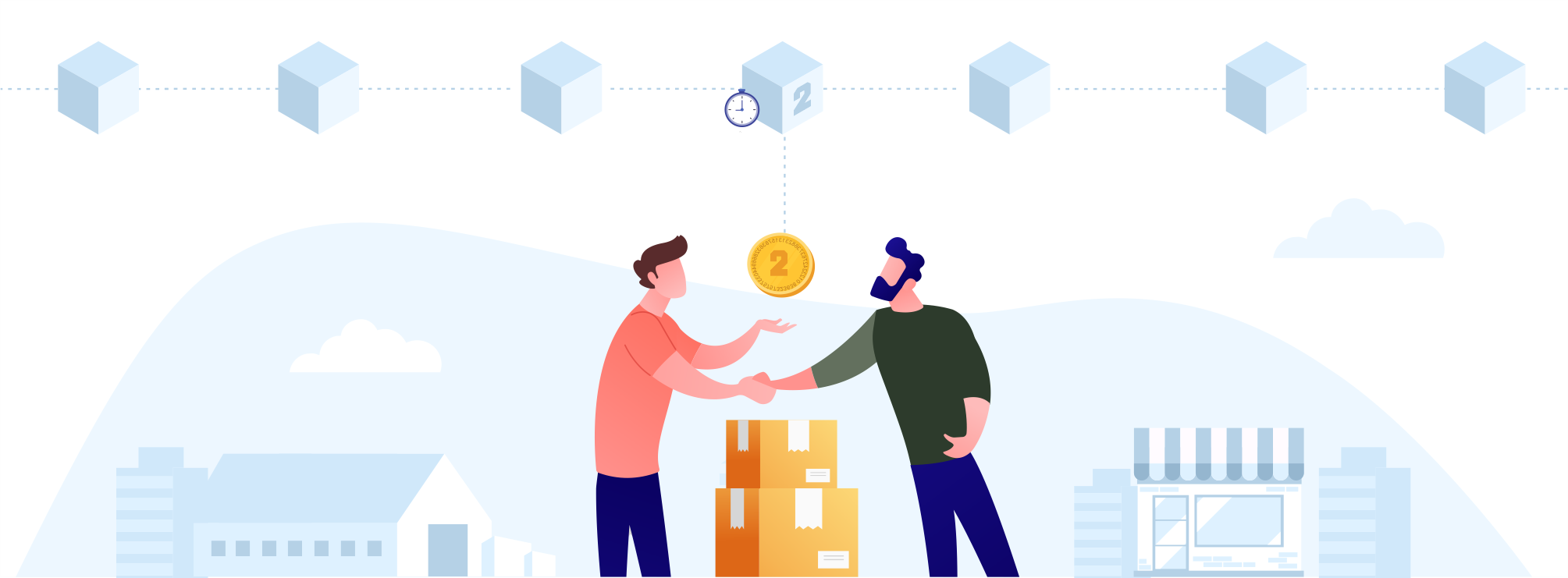
However a simple contract to certify events will still lack a good traceability part, as there won’t be links in the blockchain between each events. To solve this problem we tokenized supplychain goods.
II - Applying NFTs to tracking
What can you track easily with blockchain? NFTs. You always know who is the current owner of it, and can check at anytime its history.
Tokens of ownership
The idea that you can know at anytime an owner of an NFT can be use for an obvious use case: ownership. And ownership is something you can apply easily to fields like luxury, as a luxury good is often followed by its paper certificate, to prove it’s the real thing.
If you create an NFT of ownership for that good, you have something way better than paper: nobody can copy it or destroy it, and it will always have an owner. It can also hold interesting properties that can be transferred, like guarantee.

This was the original view of Ownest, “own”+”est” : “you really own it”, and why our first logo was a pearl. But that kind of use case has limits: it can be very difficult to include the client and motivate him. Especially when we started in 2017, with no ICO and a notion of NFT that was just emerging.
So we thought more about it, and we realized that the traceability NFTs can offer could be used for much more in the supplychain.
Real traceability with blockchain
In fact, talking with supplychain actors we realized they had a big pain point with the traceability of their transport supports, like pallets, losing sometimes up to 20% of their stock per year. But they hadn’t any good solution to stop that.
- As a supply chain is simply a serie of exchanges of goods. If we tokenise these goods and exchange the token with the good it represent, then we can track who is the current owner of the good at any given time
- for this to really work we need a contract between the actors like we've seen in I. You can't send a token if the counterpart doesn't agree on it, and you won't give the goods if he doesn't have the tokens : we introduced a new notion to token transfers, acceptation
An "hot potato" scheme

We want to trace goods along the chain. The same goods are exchanged. Tokenizing the goods make those traceable
The magic of these tokens of responsibility is that it’s easy to understand for the field user (drivers, warehousemen, etc…) and like anyone, they only want one thing: give these tokens to the next guy.
Why? Because theses tokens are the proof that you have the responsibility of all the goods associated to it. If some are broken, stolen, or forgotten, you will be the one to blame. And everything can be known in real time thanks to the blockchain.
Also, because of the validation needed when a transfer is done, you can not just get rid of these tokens as you like. You end up with Hot Potatoes that you just want to give to the next guy in the chain, because you know that these can burn.
You may have realized by now, but these Hot Potatoes tokens are simply not fungible tokens applied to supply chain. NFTs.
III - Tracking by Ownest
What are the use cases for NFTs in supplychain? We will now explain some, and what is Ownest.
Tokenizing goods for supply chain
As we explained earlier, for the responsibility use case to work, we need one more component on our NFTs: acceptation. So we made our own custom NFTs for the Ownest implementation: Unitary Tokens and Stock Tokens.
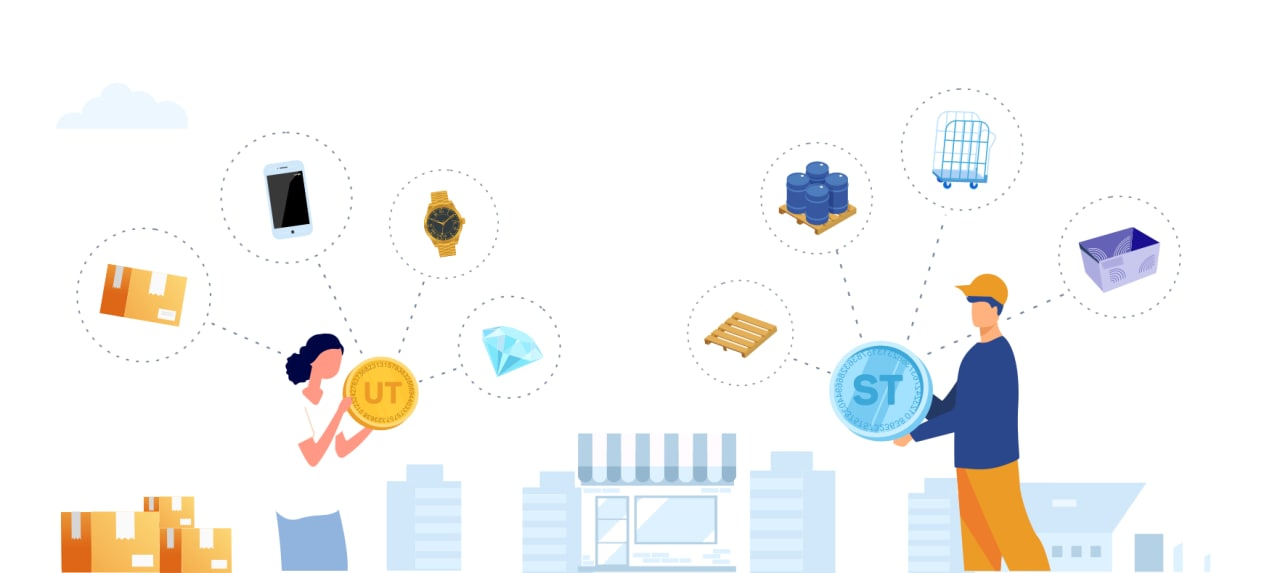
Even if it is a missing piece in the current ERCs implementation, we can draw a parallel between our custom NFTs with the current standards on Ethereum:
- Unitary token (UT). This is a ERC721 like token, a single version of an NFT. We use this token to manage unitary stocks, from packages to luxury goods, this permit to track each good precisely. It is also possible to attach information to a Unitary token, and change that information along the chain, as we act on the good itself.
- Stock token (ST). This is more like an ERC1155 token, with multiple iteration of a same good. This is especially useful to track supports like pallets, which are the same. A driver can have in charge for example 10 tokens of Red Pallets and 3 of Blue Pallets. There is different type of token for different kind of pallets, but in a same « family of pallets », we make no difference between two Red Pallets. That kind of token can also be used to track tons of cereals or oil.
Most of our use cases use both types of tokens: you can have for example 30 packages (UT) on top of 3 support pallets (ST), and both are transmitted with the goods when the transfer is done.
“Blockchain made easy”
Using blockchain tech for supplychain actors on the field is not an easy feat, but with 3 years of hard work and improvements we reached a SaaS solution that surpassed that goal.
We succeeded by abstracting the blockchain part. Our mobile application is a PWA app (nothing to download & auto-updates) that shows in a simple interface a list of the stocks you have in charge (UT & ST), with simple sending / receive features, and history of all your stock transfers.
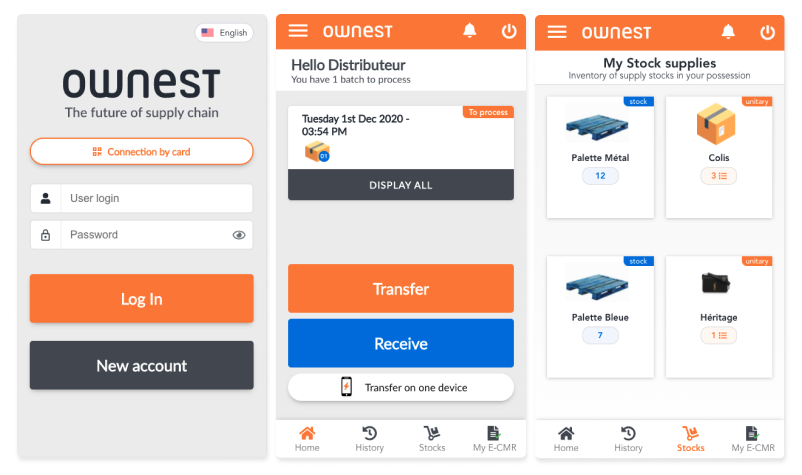
Users only need an account with classic login (mail/phone) and a password to access their stocks and then transfer or accept it (they can even do that on someone else device!). The blockchain part is hidden behind all this, so that our users don't have to learn about crypto addresses or bother about confirmations time...
On the other side of the supply chain, we have a desktop application - web based too - that allows the supply chain management to create, transfer and track their stocks. Various other important functionalities are also implemented: employees and organisation management, alerting system, e-cmr edition, disputes management, etc...
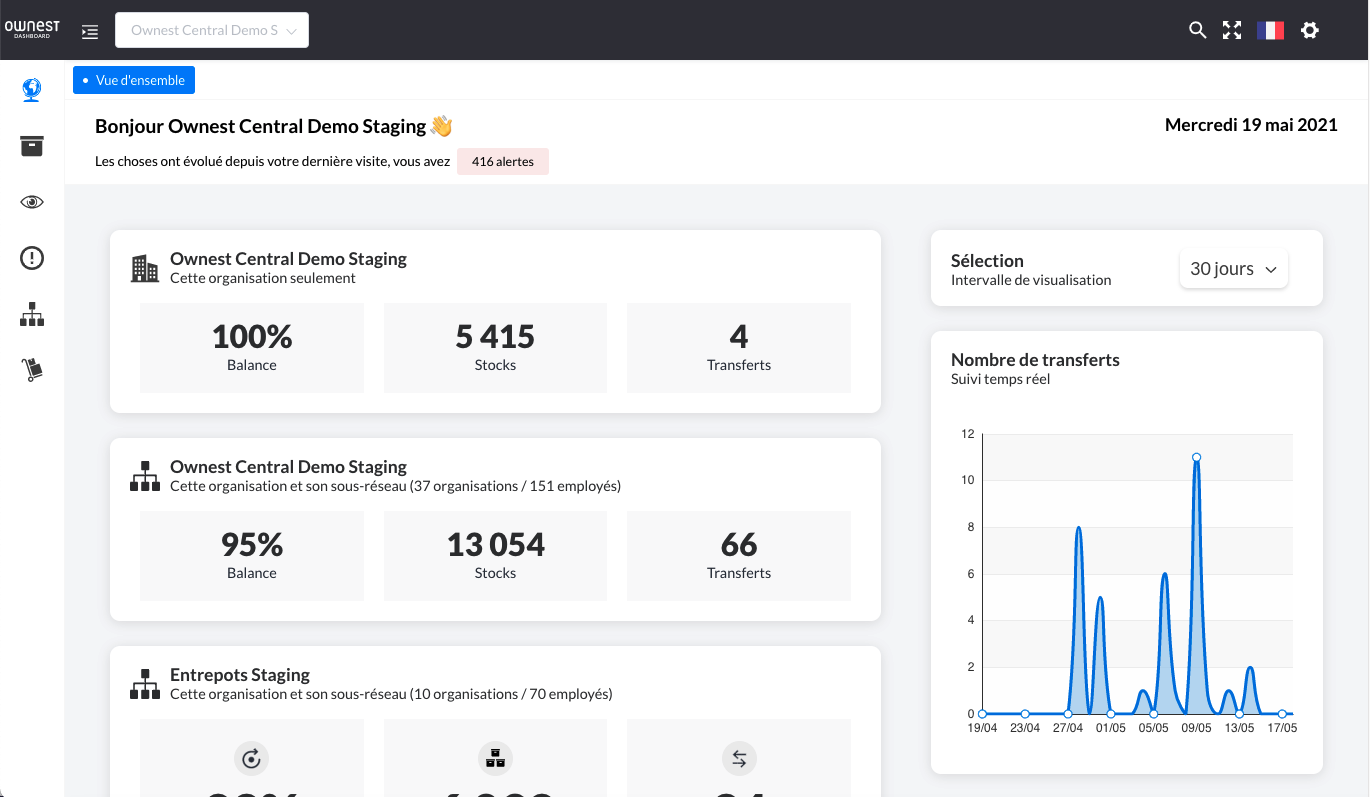
We were able to create these apps thanks to the expert work on the field from our project team and great feedback from our clients.
The result is that Ownest is now a pure supplychain tool: NFTs and blockchain are our core technology, but we are at our core a supplychain company.
What use cases?
Let's now see various supplychain uses cases, that are enabled by the NFTs technology and our applications. We will present some main uses, but keep in mind that the possibilities of responsibility tracking are endless.
Heavy packages tracking
One of our use case has been tracking heavy packages (+30kg) for an amazon-like company. Did you ever wondered why e-commerce companies lost thousands of packages (and potentially yours) ?
With Ownest, our client now knows. They can create a UT for each package on a pallet (ST) by scanning each good, then transfer everything from the warehouse to the collecting point. With this there will always be an identified owner with a package, which means that since we started that use case, no packages tracked has been lost.
Reusable packaging tracking
Pallets ! You see it everywhere but have you ever really thought about it? The losses here are quite considerable, and the “pallets-tables” that are quite trendy shouldn’t exist, if it were tracked. The financial cost for supplychain actors is huge and often took with fatality: “we can’t do anything about that”.
This is now changing with Ownest. Our clients create STs for each kind of pallets, rolls, or other reusable support packaging they have, and then can follow their goods, and know the balances of each actors in real time. Among the possibilities this offer, they can now enable alerts to know if some packaging are stuck at certain sites (for example, 10 pallets that never moves and should be taken back to the warehouse).
Track Luxury goods within the company
Some goods have more value than others. Luxury goods are a good example of that, and losses here are not always made by external actors, sometimes the products just disappear in the internal supplychain of the company.
One of our client use Ownest to track samples of its luxury products. These are often given to different people within the company, and are badly tracked. They now create UT for each or their goods, and can track who is responsible for it at any given time.
Track Industrials goods
Industrial goods can also be expensive and within subcontracting network, this type of products are easily lost. Ownest propose to some industries leaders NFT of their industrial goods to always identify the owner in real time!

Conclusion
Blockchain has long been considered as a database by the supply chain world, ignoring its real use case: peer-to-peer value transfer. This fits well with a logistic network, where the key point is to certify the exchange of goods between actors.
The NFT is one of the best representatives of this transfer of value via the blockchain, and the traceability it brings, allows to follow with certainty who owns it at a given time. If we add the ability to accept or refuse this NFT, then it can carry the responsibility on a real or virtual property.
We have been able to bring this technology to our applications, thanks to "in-house" NFTs that can carry the acceptance, and to develop a field vision where the blockchain is only an application layer for the users. This use of NFTs for the supply chain is still in its infancy, and we believe that it opens up a huge field of possibilities, which could go far beyond logistics.
![Cdiscount 2022 04 01 174830 mhxm]()
![Scnfbis]()
![Saint Laurent]() Company
Company

